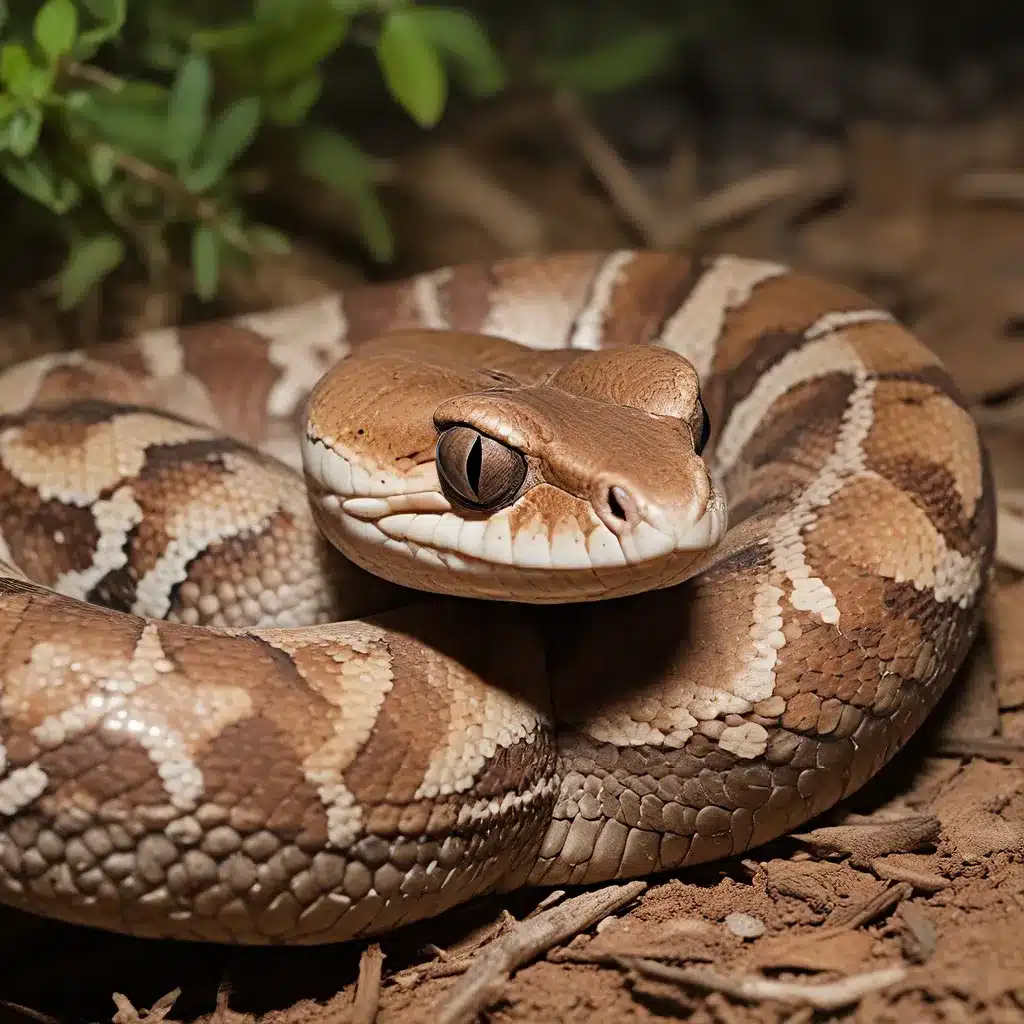
Slithering into the Heart of Serpentine Splendor
Have you ever gazed into the captivating eyes of a boa constrictor and wondered about the mysteries lurking beneath its mesmerizing exterior? Well, buckle up, my friends, because we’re about to dive headfirst into the enigmatic realm of these remarkable reptiles.
As an avid explorer and self-proclaimed serpent enthusiast, I’ve had the privilege of encountering boa constrictors in their natural habitats – from the lush rainforests of Costa Rica to the captivating Amazon basin of Ecuador. Let me tell you, these creatures never cease to amaze me. Their sheer size, their striking patterns, and their astonishingly graceful movements are enough to leave anyone spellbound.
But boa constrictors are so much more than just a pretty face (or should I say, a pretty scale?). Beneath their captivating exteriors lies a world of wonder, intrigue, and evolutionary genius. So, get ready to uncover the secrets of these magnificent serpents as we embark on a journey like no other.
Unraveling the Boa Constrictor Enigma
Let’s start with the basics, shall we? The boa constrictor, also known as the red-tailed boa or the common boa, is a non-venomous snake species that can be found in various parts of the Americas, from Mexico all the way down to Argentina. These impressive reptiles can grow to impressive lengths, with the largest specimens reaching over 13 feet (4 meters) in length.
But don’t let their size fool you – boa constrictors are the epitome of elegance and grace. With their smooth, iridescent scales and their fluid, undulating movements, these snakes are the very embodiment of serpentine beauty. And let’s not forget their captivating coloration, which can range from rich shades of copper and chestnut to vibrant hues of red, orange, and yellow.
What truly sets boa constrictors apart, however, is their hunting strategy. Unlike their venomous counterparts, these snakes rely on their incredible strength and constricting abilities to subdue their prey. Imagine the sheer power required to coil around a hapless animal, squeezing tighter and tighter until it can no longer breathe. It’s a testament to the engineering marvel that is the boa constrictor’s muscular system.
And the best part? Boa constrictors are not just impressive hunters – they’re also incredibly adaptable creatures. These snakes can thrive in a wide range of habitats, from tropical rainforests to arid deserts, making them a true testament to the resilience of the natural world.
Encountering Boa Constrictors in the Wild
Now, as someone who has had the privilege of witnessing boa constrictors in their natural habitats, let me tell you – it’s an experience like no other. Imagine trekking through the lush, verdant canopy of the Costa Rican rainforest, your senses heightened, your heart pounding with anticipation. Suddenly, a flash of color catches your eye, and there it is – a magnificent boa constrictor, gracefully coiled around a tree branch, its scales shimmering in the dappled sunlight.
Or picture yourself navigating the winding rivers of Ecuador’s Amazon basin, the air thick with the sounds of the jungle. As you glide silently through the water, a rustling in the branches above catches your attention, and there, draped effortlessly across a tree limb, is a stunning Cuyabeno boa, its vibrant patterns a mesmerizing contrast to the verdant foliage.
These encounters are not just moments of sheer awe and wonder – they’re also opportunities to witness the intricate web of life that sustains these remarkable creatures. Boa constrictors are not just captivating in their own right, but they also play a vital role in maintaining the delicate balance of their ecosystems, acting as both predators and prey within the complex food chains that exist in the rainforests and river systems they call home.
Conserving the Boa Constrictor’s Legacy
As we uncover the wonders of the boa constrictor, it’s crucial that we also acknowledge the very real threats these creatures face. From habitat destruction and fragmentation to the illegal wildlife trade, boa constrictors and other reptiles are under constant pressure from human activity.
But all hope is not lost, my friends. By supporting conservation efforts and eco-friendly initiatives, we can work to protect these magnificent serpents and ensure that future generations can also marvel at their beauty and grace. Organizations like Golden Exotic Pets are leading the charge, advocating for responsible pet ownership and funding crucial research and conservation projects.
So, the next time you find yourself captivated by the mesmerizing gaze of a boa constrictor, remember that you hold the power to make a difference. By embracing sustainable practices, spreading awareness, and supporting the vital work of conservation organizations, we can all play a role in preserving the legacy of these incredible creatures.
Embracing the Boa Constrictor’s Allure
As we bid farewell to our journey through the serpentine splendor of the boa constrictor, I hope you’ve come away with a newfound appreciation for these remarkable reptiles. From their sheer size and strength to their captivating patterns and graceful movements, boa constrictors are truly a testament to the wonders of the natural world.
So, the next time you have the chance to encounter a boa constrictor, whether in the wild or in a responsible captive setting, take a moment to truly connect with these magnificent creatures. Gaze into their eyes, feel the power of their muscles, and let their enigmatic allure captivate your senses. And remember, by supporting conservation efforts and embracing sustainable practices, we can all play a role in ensuring that the boa constrictor’s legacy lives on for generations to come.

